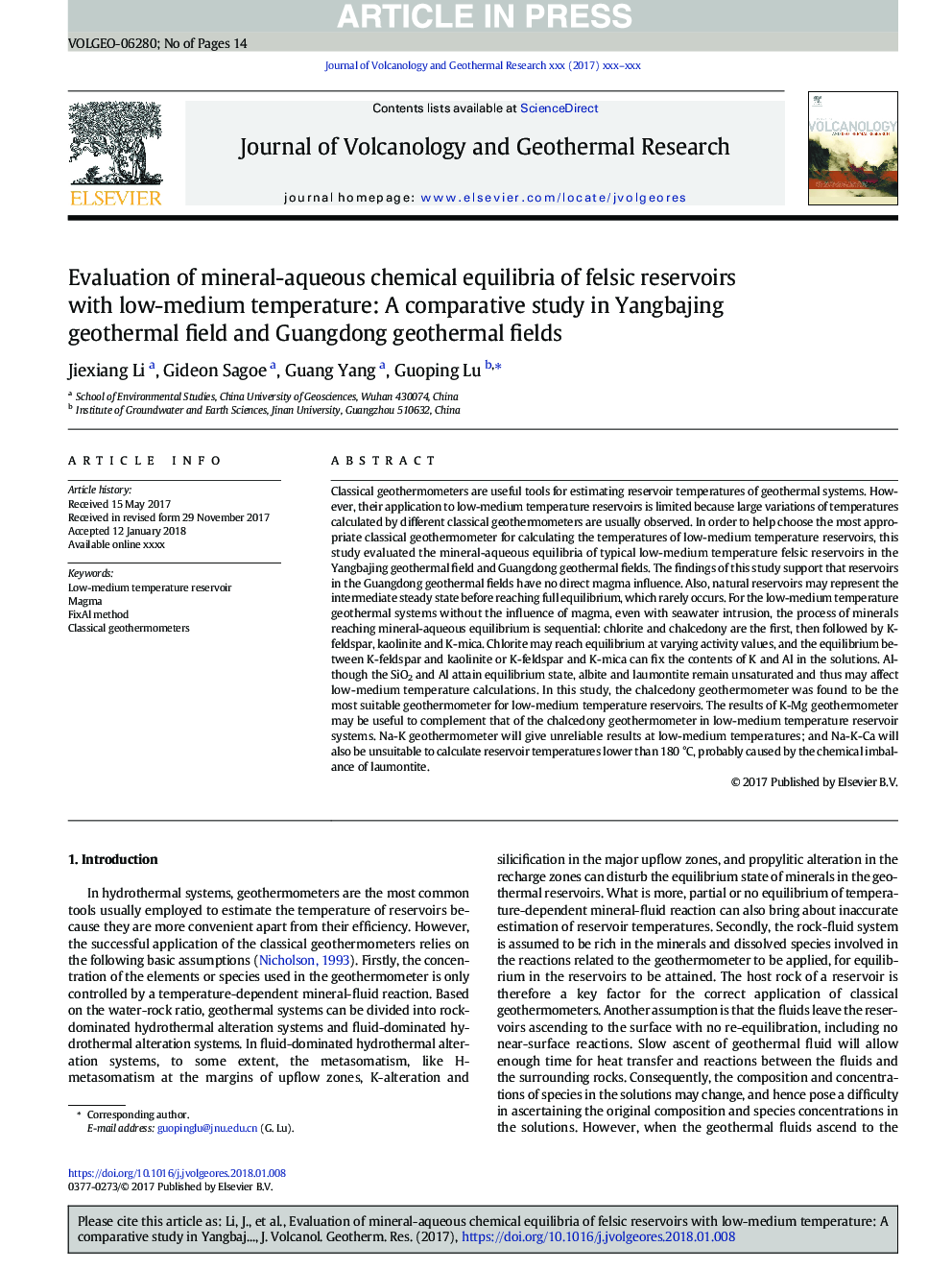| Article ID | Journal | Published Year | Pages | File Type |
|---|---|---|---|---|
| 8911392 | Journal of Volcanology and Geothermal Research | 2018 | 14 Pages |
Abstract
Classical geothermometers are useful tools for estimating reservoir temperatures of geothermal systems. However, their application to low-medium temperature reservoirs is limited because large variations of temperatures calculated by different classical geothermometers are usually observed. In order to help choose the most appropriate classical geothermometer for calculating the temperatures of low-medium temperature reservoirs, this study evaluated the mineral-aqueous equilibria of typical low-medium temperature felsic reservoirs in the Yangbajing geothermal field and Guangdong geothermal fields. The findings of this study support that reservoirs in the Guangdong geothermal fields have no direct magma influence. Also, natural reservoirs may represent the intermediate steady state before reaching full equilibrium, which rarely occurs. For the low-medium temperature geothermal systems without the influence of magma, even with seawater intrusion, the process of minerals reaching mineral-aqueous equilibrium is sequential: chlorite and chalcedony are the first, then followed by K-feldspar, kaolinite and K-mica. Chlorite may reach equilibrium at varying activity values, and the equilibrium between K-feldspar and kaolinite or K-feldspar and K-mica can fix the contents of K and Al in the solutions. Although the SiO2 and Al attain equilibrium state, albite and laumontite remain unsaturated and thus may affect low-medium temperature calculations. In this study, the chalcedony geothermometer was found to be the most suitable geothermometer for low-medium temperature reservoirs. The results of K-Mg geothermometer may be useful to complement that of the chalcedony geothermometer in low-medium temperature reservoir systems. Na-K geothermometer will give unreliable results at low-medium temperatures; and Na-K-Ca will also be unsuitable to calculate reservoir temperatures lower than 180â¯Â°C, probably caused by the chemical imbalance of laumontite.
Keywords
Related Topics
Physical Sciences and Engineering
Earth and Planetary Sciences
Geochemistry and Petrology
Authors
Jiexiang Li, Gideon Sagoe, Guang Yang, Guoping Lu,
